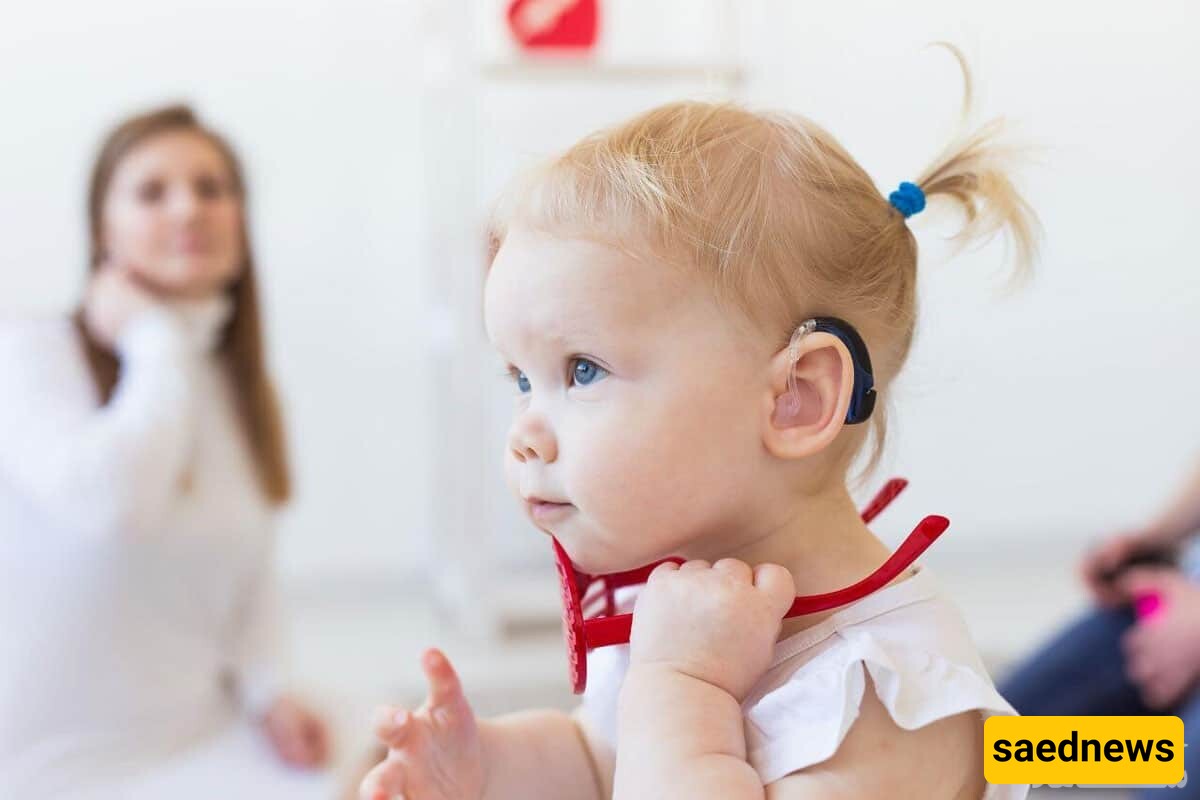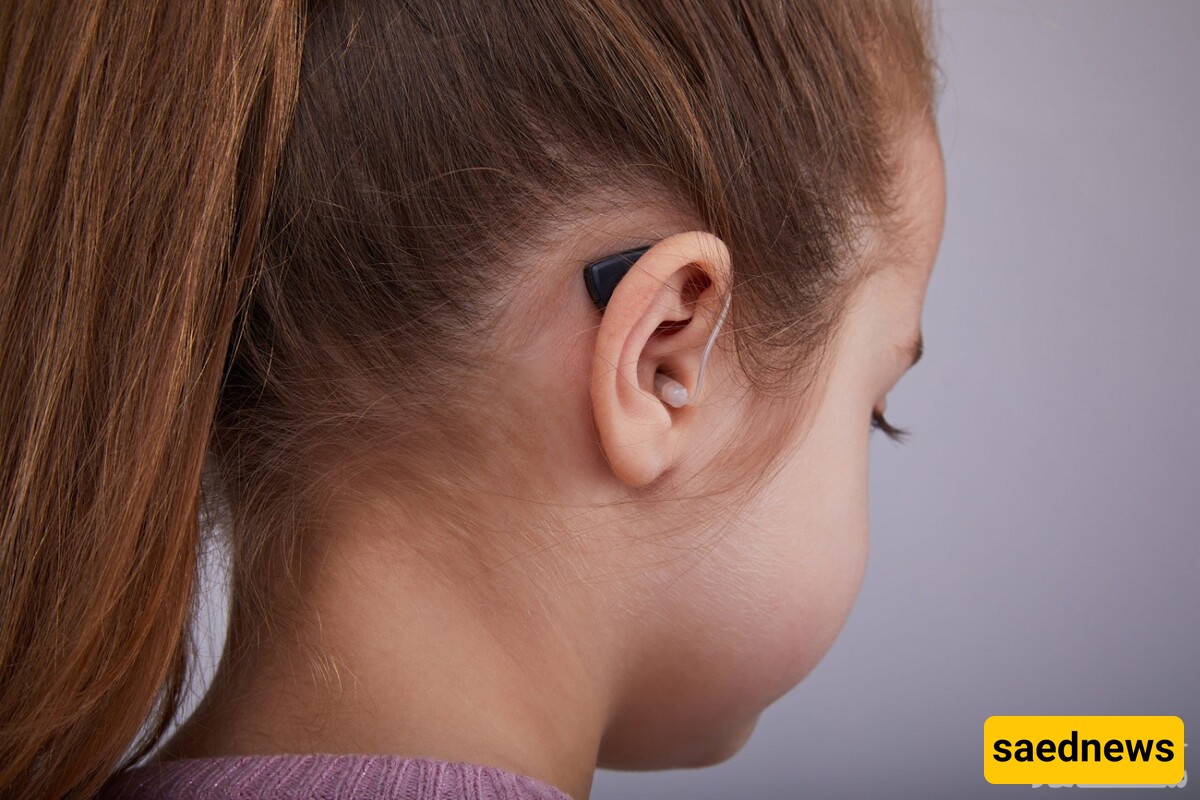Parental awareness of the signs of hearing loss in children and infants is crucial. In this article, we aim to familiarize you with the most important indicators of hearing loss in children.

Your child’s ability to hear is the foundation of their learning ability. The most common initial method for detecting hearing impairment in children is a hearing screening test, which is typically performed in the hospital after birth. However, parents and other caregivers should also be vigilant about warning signs of hearing loss in their child. The symptoms of hearing impairment can vary among children, and the degree of hearing loss may also differ. Some warning signs may not necessarily indicate a serious problem. For example, your child may simply be a deep sleeper or suffer from colic that does not respond to soothing techniques. However, to ensure there is no underlying issue, it is best to consult your child's doctor if you notice any warning signs of hearing loss.

Parental awareness of hearing loss in children and infants is essential because untreated hearing loss can delay brain development in the speech and language areas. These delays can lead to learning difficulties, often resulting in poor school performance. A child with hearing loss may face academic or social challenges. Children with hearing impairments may even be candidates for cochlear implant surgery as early as 12 months of age.
Hearing loss in infants occurs in two forms: congenital hearing loss (present at birth) and acquired hearing loss (develops after birth).
Congenital hearing loss: Caused by genetic factors during pregnancy.
Acquired hearing loss: Occurs after birth due to infections affecting the ear or brain.
Additionally, hearing loss is classified into two main types: conductive hearing loss and sensorineural hearing loss, with symptoms varying depending on the underlying cause.
Conductive hearing loss happens when sound waves traveling from the outer and middle ear to the inner ear are obstructed. Causes include earwax blockage, middle ear infections (otitis media), fluid buildup in the middle ear, or damage to the small bones of the middle ear. Conductive hearing loss may be temporary or permanent.
Sensorineural hearing loss occurs due to a problem in the inner ear or the auditory nerve. It may result from abnormal inner ear development, physical damage to the inner ear, infections like meningitis or rubella, or tumors.
If you have recently noticed signs of hearing loss in your child or infant, you may have many questions and concerns. It is natural to feel anxious, but rest assured that many educational and treatment options are available both at home and in school.
The ability to hear helps a child develop speech and language skills. Ensuring your child’s hearing loss is treated properly is crucial to minimizing its negative impact on their education. Research shows that early treatment before six months of age leads to better speech and language outcomes compared to later interventions.

If your child shows any of the following signs by three months of age, consult your pediatrician:
Does not startle at sudden loud noises.
Does not respond to sounds, music, or voices.
Is not calmed by soft or gentle sounds.
Does not move or wake up in response to voices or noises in a quiet room.
By two months, does not make vowel sounds like “oh.”
By two months, does not quiet down in response to familiar voices.
If your baby (aged 4-8 months) shows any of these symptoms, consult a doctor:
Does not turn their head or eyes toward an unseen sound source.
Shows no facial reaction to hearing voices or loud noises.
Does not enjoy rattles, bells, or other sound-making toys.
By six months, does not try to imitate sounds.
Does not babble or make cooing sounds.
Does not react to words like “no” or changes in tone of voice.
Appears to hear some sounds but not others.
Only responds to sounds that include vibrations, rather than the sound itself.
If your baby (9-12 months) displays any of the following signs, consult a doctor:
Does not turn toward soft noises like whispering or hissing sounds.
Does not respond to their name.
Does not vary the pitch of their voice while babbling.
Does not use consonants like "m, p, b, g" while babbling.
Does not react to music by moving or singing along.
Does not say simple words like "mama" or "dada" by their first birthday.
Does not recognize common words for objects or gestures like waving goodbye.
Sometimes, older children may develop hearing loss later on. If you suspect your child has hearing loss, watch for these signs:
Seems to hear well at times but not at others.
Turns up the TV volume higher than usual.
Frequently asks "What?" or requests you to repeat yourself.
Tilts one ear forward while listening.
Appears inattentive or distracted.
Complains of ear pain or noise.
Speaks louder than normal.
Focuses intensely on your face while speaking, possibly relying on lip-reading.
Struggles to understand speech when you are behind them or covering your mouth.
Hearing ability is directly linked to communication, speech development, and learning skills. Hearing impairment can delay language development, leading to learning difficulties and poor academic performance. Unfortunately, because hearing loss can sometimes mimic inattention or misbehavior, children with hearing impairment may be mistakenly labeled as having a learning disability.
Key signs of hearing loss in school-age children include:
Delayed speech and language development.
Difficulty pronouncing words correctly.
Inability to hear soft sounds like whispers.
Struggling to hear distant sounds.
Extreme sensitivity to loud noises.
Trouble understanding speech in noisy environments.
Poor academic performance, especially in spelling and math.
Difficulty locating the source of sounds.
Untreated hearing loss delays brain development in the speech and language areas, leading to learning difficulties and poor school performance. Unfortunately, children with hearing loss may be misdiagnosed with conditions like ADD or ADHD.
For children with severe hearing loss, early intervention is even more critical. Without proper intervention, they may struggle to complete their education.
A child with hearing loss is not necessarily less capable than their peers, but the classroom environment may not always support them. Large class sizes, teachers unfamiliar with hearing loss, or fast-paced lectures can make learning difficult.
For example, if a teacher speaks while facing the board instead of the students, a child with hearing loss may miss part of the lesson. Unclear verbal instructions, unfamiliar accents, or fast speech also create barriers to learning.
In addition to academic difficulties, children with hearing loss may also struggle socially. Communication is essential for social interactions and forming friendships. Without it, children may feel isolated or left out of group activities. They may also develop low self-esteem or prefer to avoid social interactions, leading to loneliness.
The best time to diagnose hearing problems is before three months of age, and if necessary, treatment (such as hearing aids) should begin before six months to prevent speech and language delays.
Common diagnostic tests include:
OAE Test: Evaluates the cochlea and hair cells.
ABR Test: Assesses the auditory nerve.
Tympanometry: Checks for ear infections or fluid buildup.
Audiometry: Used for older children in soundproof booths.
Children with severe hearing loss may require cochlear implants by 12 months to improve language learning. Post-surgery, speech therapy is crucial.
A child may qualify for cochlear implants if they have:
Severe hearing loss in both ears.
No benefit from hearing aids.
No medical risks preventing surgery.
Supportive parents committed to post-surgery rehabilitation.

